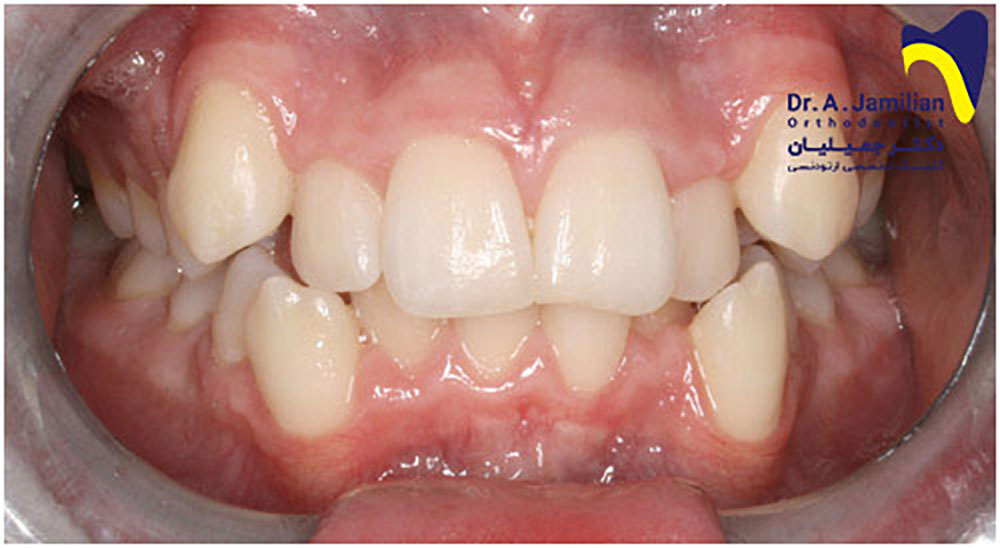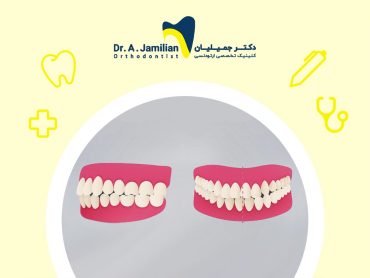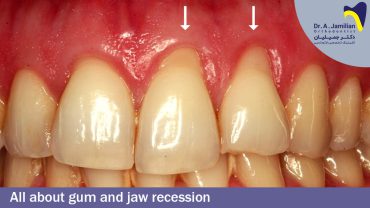One of dental malocclusions is classified the as crowded teeth. This is where there is an excessive number of teeth . As you can see in the images on this page, on the left side, the teeth are developed everywhere both parents and patients are terrified and worried. Some of the main questions preoccupying the patient’s mind is why my teeth are misaligned? What is the best way to treat these misaligned teeth that are getting more crowded every day? Who should I go to for treating these maligned teeth? Many more questions exist like these. To be able to find answers to your questions, read the full text.

The Reason for Crowded Teeth & Misalignment
Finding the reason for the misalignment of the overcrowded teeth is the first step for successful and permanent treatment. We recommend you to refer to an experienced orthodontist in this regard. The orthodontist will say one of the following reasons:
- Heredity: patients with crowded teeth may have inherited the small jaw from their mother and the large teeth from their father. In this case, the large teeth in small teeth arch lead to a lack of space which results in teeth crowding.
- Small Jaw: Sometimes the teeth are not too large however there are other possibilities such as, the patient’s jaw is too small or has not been developed completely.
- Large Teeth: Sometimes a patient’s jaw size is standard but the teeth are too large. However, the main cause of crowded teeth is the small jaw and dental arch.
- Bad Habits: Bad habits like sucking finger, tongue, or nail can result in crowded teeth.
- Poor Nutrition: This could lead to underdevelopment of jaws
- Extra Teeth: Some people have too many teeth, thus, having extra teeth could result in teeth crowding.

Orthodontics Treatment for Crowded Teeth & Misalignment
To treat these types of malocclusion, you need to go to an orthodontist. Some people go to a dentist and extract their posterior or wisdom teeth. However, extracting posterior teeth without consulting an orthodontist is not helpful in the development of treatment. Because crowded teeth should be moved by a proper orthodontics appliance in order to be positioned in the right place. Bear in mind that the crowded teeth will not move by themselves. You cannot treat this type of malocclusion merely by opening the terminal spaces.
The orthodontist will determine how many teeth and in which locations should be extracted from the dental arch. In the orthodontics treatment of the crowded teeth, 2 to 4 teeth should be extracted. These teeth are extracted symmetrically. If one tooth is extracted from the upper right dental arch, the other teeth will be extracted from the left side of the same dental arch.
Extracting 4 Teeth in Crowded Teeth Orthodontics Treatment
In this procedure, 2 teeth are extracted from the upper arch and 2 teeth from the lower arch. But don’t worry about losing your teeth. By completing the course of the orthodontics treatment no one could ever guess that 2 or 4 teeth are extracted from your mount. Keep in mind that a professional orthodontist does not extract healthy teeth as much as possible and tries to extract the decayed teeth.
Is Extracting Teeth Necessary for Crowded Teeth Treatment?
No, the patients do not necessarily need teeth extraction in orthodontics treatment. Although, in some cases, the physician may decide to keep the patient’s teeth. Orthodontist will place a screw on the jaws to open them and expand the dental arch. This is done to make enough space for all of the patient’s teeth. Afterward, they align the crowded teeth using proper orthodontics appliances.
Crowded Teeth & Malocclusion of Jaws
Other than crowded teeth, some patients have malocclusion in one or both jaws. Fixed and removable orthodontics can be used in the treatment of this group of patients. To position the jaws in the right direction. Here, removable orthodontics is used and fixed orthodontics is used to align the crowded teeth
Frequently asked questions about dental crowding and misalignment
1-How is the dental crowding and misalignment measured?
The orthodontist measures this abnormality on a millimeter scale. If the teeth are far apart, it means that the patient has got misaligned teeth and a diastema. If the patient’s teeth are too close or overlapping, the patient may suffer from tooth crowding.
2-Is extracting the tooth necessary for the orthodontics of crowded teeth?
If the patient’s jaw has enough space for an organized alignment of the teeth, there will be no need to extract the tooth. If the orthodontist determines that the patient’s tooth needs to be extracted, they will often choose the decayed ones for this purpose and will refuse to pull out the patient’s healthy teeth. Unless the patient has an extra tooth, the orthodontist avoids pulling out the patient’s teeth as much as possible.
3-What are the classifications of dental crowding?
The orthodontists divide dental crowding and jaw malformations into three general categories. These irregularities are called malocclusion and are labeled from grade one to three depending on the type and sternness of the abnormality.
4-Is it preferable to treat the problem of dental crowding by orthodontics or composite?
In cases the patient suffers from jaw deformities in addition to misaligned and crowded teeth, the composite cannot be effective even for a temporary amendment of the teeth. Also, the composite leads to disability in moving the teeth and putting them in the right place. Thus, composites cannot be a good choice for treating dental crowding.
5-What is the use of dental bandaging in an orthodontic treatment of misaligned and crowded teeth?
If a tooth is chipped or broken, it can be repaired by bandaging. An orthodontic treatment is used to move the teeth, and bandaging is only effective for fixing dental fractures and cracks.


